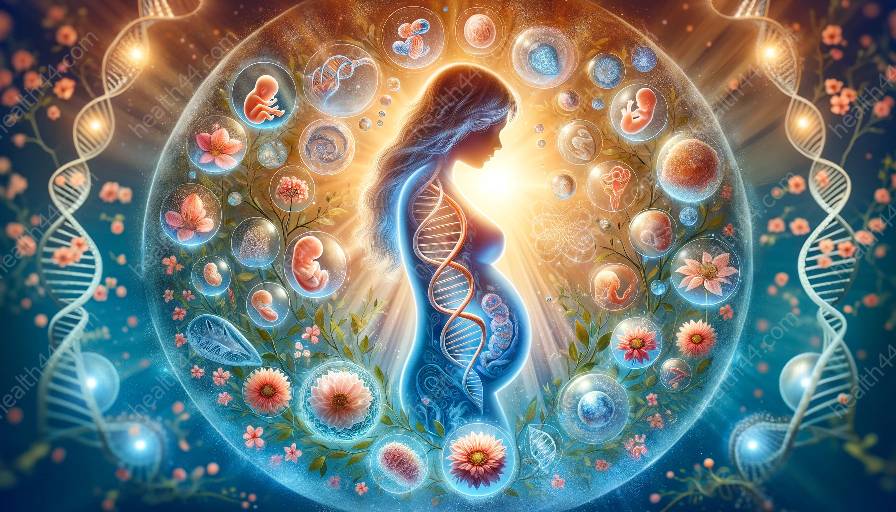During fetal development, the progression of visual perception is a crucial aspect of the growth and maturation process. Fetal vision encompasses a series of key developmental milestones from conception to birth, laying the foundation for the future visual capabilities of the newborn.
Conception and Early Formation
At the earliest stages of fetal development, the rudimentary structures of the eyes begin to form. Around the third week of gestation, the optic vesicles emerge as outgrowths from the developing forebrain. These structures eventually give rise to the retina, which is essential for capturing and processing visual stimuli.
The initial formations of the eyes and associated structures set the stage for the development of fetal visual perception.
Emergence of Light Sensitivity
By the end of the first trimester, around week 14, the fetal eyes become sensitive to light. Although the eyelids remain fused at this stage, the developing retinas can respond to the presence of light filtering through the mother's womb. This represents a significant milestone in the fetal visual system's progression, as the ability to detect light paves the way for more intricate visual experiences in later stages of development.
Refinement of Visual Structures
As the fetus progresses through the second trimester, the visual structures continue to refine and mature. The eyelids begin to separate, and the eyes take on their characteristic appearance. The development of the iris and lens further enhances the fetus’s ability to perceive and focus on visual stimuli, contributing to the evolving capabilities of fetal vision.
Fetal Visual Responsiveness
By the latter part of the second trimester and into the third trimester, the fetus becomes increasingly responsive to visual cues. Studies have shown that fetuses exhibit behaviors such as eye movements and blinking in response to light and visual stimulation. This heightened responsiveness suggests that the fetal visual system is actively processing and engaging with visual input, laying the groundwork for postnatal visual development.
Connections with the Brain
Simultaneously, the connections between the developing visual system and the fetal brain become more intricate and refined. The visual pathways continue to mature, establishing the neural circuitry necessary for processing and interpreting visual information. These connections are vital for the integration of visual input and the subsequent cognitive development related to visual perception.
Preparation for Birth
As the fetus approaches full term, the visual system undergoes further refinement in preparation for the transition to the external environment. The closing and reopening of the eyelids, along with the establishment of more coordinated eye movements, reflect the final stages of maturation in fetal visual perception before birth.
Significance for Fetal Development
The key developmental milestones in fetal visual perception are integral to overall fetal development. The ability to perceive and process visual stimuli in the womb not only shapes the emerging visual capabilities of the newborn but also plays a vital role in the cognitive and neurological development of the fetus.
Furthermore, the experiences gained through fetal visual perception contribute to the establishment of early bonding and recognition processes after birth, as the newborn builds upon the visual stimuli encountered in the womb.
Conclusion
The journey of fetal visual perception from conception to birth encompasses a sequence of significant milestones that contribute to the foundation of the newborn's visual capabilities and cognitive development. Understanding the intricate progression of fetal vision provides valuable insights into the early experiences and capabilities of the developing fetus, highlighting the interconnectedness of visual perception with overall fetal development.


